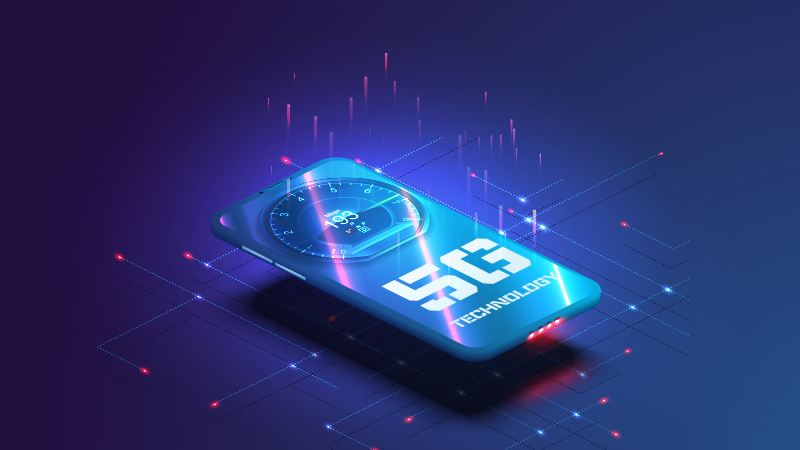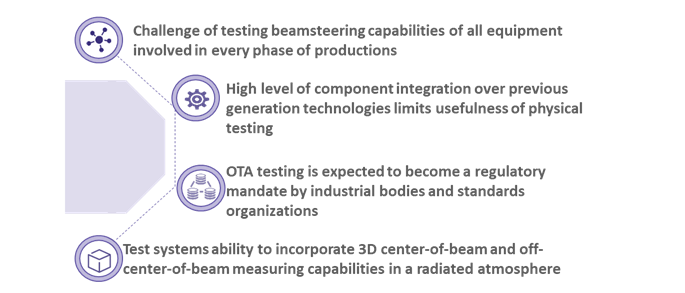
5G Network Testing Process

Testing Approach
The transition from a cell-centric network to beam-centric network architecture has contributed to a shift in testing and measurement methodologies to a device centric use case based approach.
The success of device-based testing requires network operators and equipment manufacturers to overcome challenges related to 3D-based testing while also factoring the various effects of blockage and interference.
Key considerations and requirements for 5G testing
-
Testing measurements must be adaptive and use case based
-
The testing platform should collect and process a high volume of user data
-
Platforms must accommodate the inclusion of additional and new measurement metrics
-
Require higher acquisition rate to measure and track beamforming
-
Support airborne and drone-based testing for complex 3D scenarios and low feasibility CPE locations
Testing Strategies for 5G
Testing strategies based on use cases are expected to reduce the complexity of developing test architectures for 5G deployment owing to the stark contrast in the approaches required for testing requirements of Internet of Things (IoT) sensors, autonomous vehicles, ultra-high throughput clubbed with cloud RAN/CN, massive MIMO, and beamforming.
The major chunk of demand for real-time automation is expected to come from two sectors: energy and utilities and manufacturing and healthcare. Similarly, media and entertainment, public safety, healthcare and manufacturing are expected to contribute toward the demand for enhanced video services use case.
Shift in Testing Requirements
Testing for 5G network scenarios and use cases will have to factor in the addition of airborne testing requirements, climatic conditions, and geography to estimate and evaluate the effects of blockage and interference in beamforming effectively.
Inclusions
-
Drones are likely to be employed for evaluating reference signal received power (RSRP) and signal-to-interference-plus-noise ratio (SINR)
-
Time window to account for weather conditions
-
Geographic topologies to account for blockage effect
-
Depth factoring by factoring in urban/suburban/rural areas and transport medium
Over-the-air (OTA) testing is considered to be a game changer in the 5G network marketspace and expected to become a prerequisite for device and network design and certification. OTA measurement also promises high accuracy, scalability, and cost effectiveness.
Key Drivers of OTA Testing
Key Challenges of OTA Testing
-
Appropriate setup and positioning is required for the 3D antenna to evaluate moving beams, without compromising on the effects of interference and scattering
-
Individual transceivers in the antenna system have to be characterized through the OTA interface
-
Transformation from static pattern to dynamic beam measurement systems is required to accurately evaluate beam tracking and beamsteering algorithms
Conclusion
Testing requirements have significantly changed owing to the properties of the 5G millimeter wave. Software testing platforms must be capable of handling a high level of virtualizations and are expected to be equipped with advanced 3D capabilities, Big Data analytics capabilities to predict data traffic, provisions to factor data points on geodata and corresponding antenna patterns, and AI and machine learning functionalities to predict voice quality.
The capability to measure and incorporate performance at the nodes will impact customer experience in future scenarios. Though the requirements have changed, the commercial models and engagement models have not undergone a significant transformation. The same models are being used but with the inclusion of relevant parameters.
The cost, however, is expected to be comparatively much higher than for testing other technologies in the current scenario owing predominantly to low-scale customized test solutions, maturity of technology, availability of suppliers, and a high R&D requirement. The support cost for 5G testing is considerably higher than for other technologies because support services are predominantly provided by the solution developer rather than the support engineer.
Related Insights:
View All
Get more stories like this
Subscirbe for more news,updates and insights from Beroe









